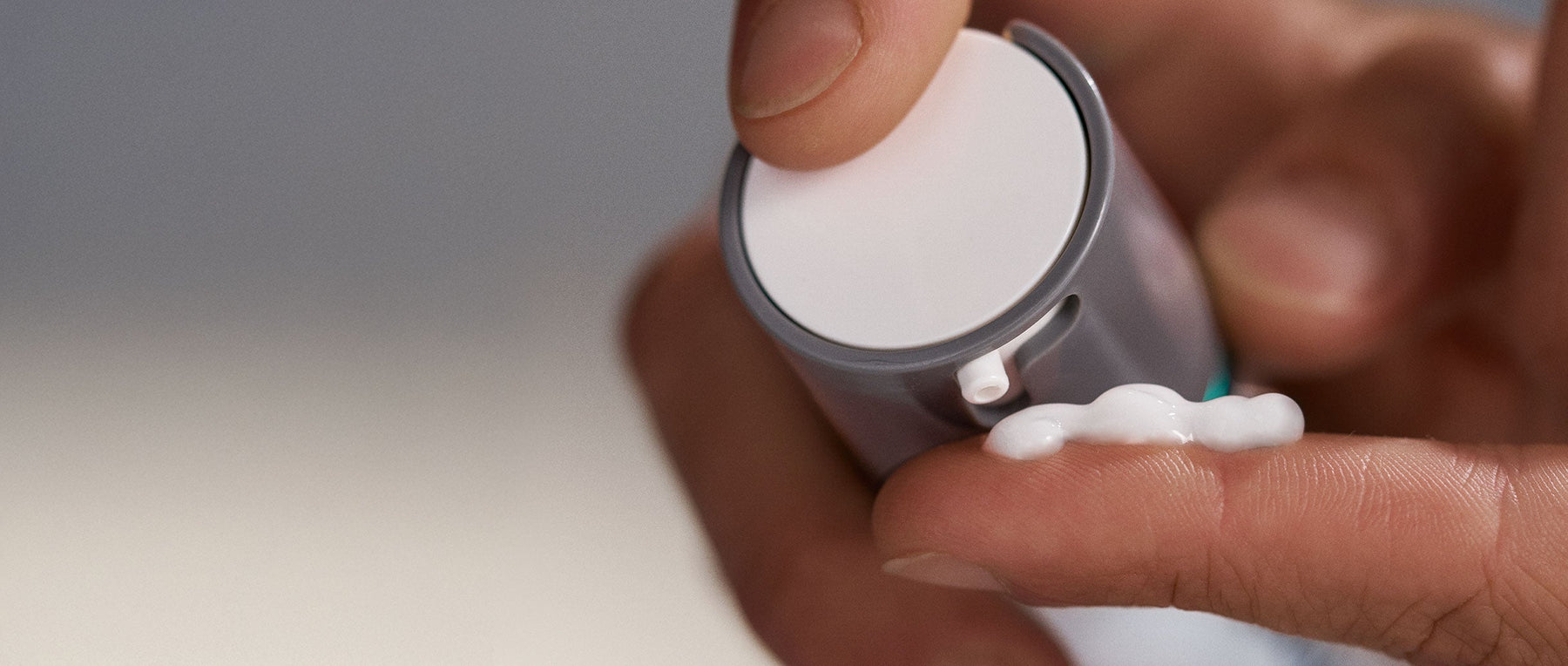4 min read
Here’s the difference between adult acne and teen acne
07/10/2025As we age, our skin changes–and so does our acne. Learn how your acne evolves as you get
older and how to treat adult breakouts.

Story Highlights:
- Adult skin is less resilient than teen skin; it has a slower cell turnover rate and heals more slowly.
- Keeping adult skin clear involves focusing on multiple internal and external factors.
- To clear teen skin, focus on cleansing and oil control.
Acne isn’t just for teenagers. Many adults deal with it, too; in the US, over one third of acne office visits are made by women over 25 years old. While the symptoms might look similar, adult acne and teen acne differ significantly in causes, treatment approaches, and triggers. Understanding these differences is key to managing acne effectively.
Adult Acne
Thought you could leave acne behind in your teens? Think again. Chronic stress, hormonal fluctuations, busy lifestyles, and pollution are key drivers of adult acne, congestion, and uneven skin tone. Slower skin cell turnover with age means breakouts take longer to heal, leaving postacne marks that linger.
Adult acne often presents as red, sensitive, and inflammatory breakouts around the mouth, chin, and jawline. Hormonal changes and chronic stress are frequent culprits, especially for women. Adult breakouts are also more challenging to treat because the skin’s microbiome changes with age, and harsh treatments can disrupt its balance – exacerbating breakouts and accelerating signs of skin aging.
How to clear adult acne:
- Focus on balancing the skin with prebiotics like those found in Acne Biotic Moisturizer, and making sure your other skin care needs are met.
- Avoid picking or squeezing breakouts at home; it can result in more breakouts, scarring or redness. Instead, see a professional skin therapist for an extraction.
- Adult skin can lose its ability to retain moisture with age. Avoid over-drying skin by choosing products that contain less drying ingredients such as Salicylic Acid or Glycolic Acid to help remove dead skin cells, excess oil and dirt, as well as Thymol and Terpineol to target acne causing bacteria.
- If you’re combatting signs of skin aging, look for ingredients such as Niacinamide and Hexylresorcinol to help balance uneven skin tone. Retinol – a wrinkle-smoothing ingredient – can also help reduce the appearance of premature aging.
- Try Active Clearing formulas; they’re specially designed to target adult acne.
Teen Acne
Teen acne is part genetic, part hormonal, and related to puberty. Teens typically break out on the face, chest and back, and have more blackheads and whiteheads compared to adults. These breakouts often arise because androgens, the ‘male’ hormones (which everyone has!) surge during adolescence, producing excess sebum.
Teens have faster cell turnover and more resilient skin than adults, which means they recover quickly from breakouts. After the teen years, one hormonal changes have leveled off, acne tends to improve.
How to clear teen acne:
- Focus on learning and maintaining good skin care habits to help prevent future breakouts.
- Avoid products that contain pore-clogging ingredients like Lanolin and Mineral Oil. Stripping ingredients such as Alcohol – commonly found in astringent toners – can cause skin to produce more oil, fueling even more breakouts. Artificial fragrances and colors can also further irritate breakout-prone skin.
- Look for ingredients like Salicylic Acid to keep dead skin cells and bacteria from accumulating.
- Moisturize and wear SPF daily. Dehydration and environmental stress can trigger more sebum production and make existing breakouts look worse. Even if your skin seems oily, use an oil-free SPF moisturizer to help protect and balance your skin.
- Try Clear Start formulas to treat and prevent teen acne.
Still have questions? Chat with one of our professional skin therapists for personalized recommendations and explore our adult acne and teen acne collection.




